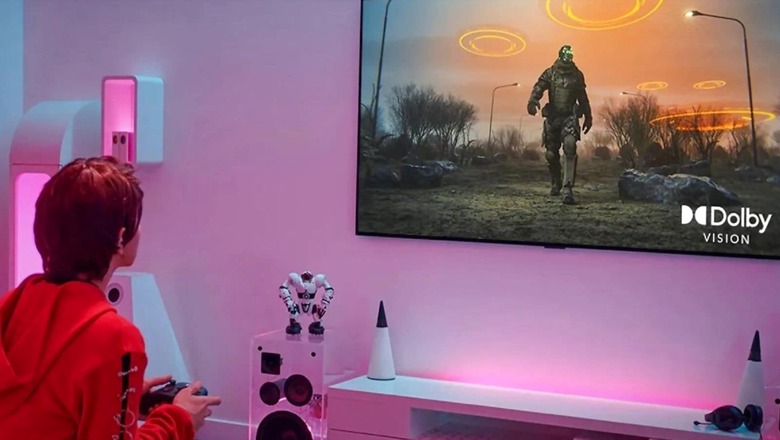
views
The Indian market currently possesses all the right ingredients to offer a decent movie-viewing experience at home. We have affordable internet connectivity options, budget smart TVs, and most importantly, a host of OTT platforms – offering personalised movies and shows recommendations in multiple languages. While movie buffs can argue that TVs do not deliver a theatre-like experience, customers’ behaviour keeps changing, and this might be already happening as per trends shown by research firm Counterpoint Research. At the front of all these changes, we also have Dolby – a brand synonymous with delivering audio and visual technology to elevate the movie-viewing experience, whether at home or cinema. To understand these changes, News18 Tech spoke to Pankaj Kedia, Managing Director, Emerging Markets at Dolby Laboratories.
Audio Quality in TVs: Loudness Vs Clarity
In a conversation with News18 Tech, Pankaj Kedia, Managing Director, Emerging Markets at Dolby Laboratories, highlighted the importance of good audio and visual technologies for TVs to get the best movie (or shows) experience at home. He also emphasised that good audio enhances sports content that many customers cited as a requirement while purchasing TVs in Counterpoint’s ‘Market Lens’ survey that was shared with us internally and is available on Dolby India’s LinkedIn.
But what does good audio mean? Kedia says, “It is very critical to the overall entertainment experience. Whether it is the clarity of dialogues or different elements used in the sound design, it is a part of the audio construct. If you don’t hear all the key pieces, you’re actually missing half of the story."
One of the issues that many TVs still face is ‘loudness.’ Kedia explains that it [loudness] is not “necessarily about decibels, but it is about clarity." He indicates that companies like Dolby and even OEMs need to ensure that customers get clearer sound irrespective of the device.
“One of the interesting anecdotes we heard from the big manufacturers is they see the largest amount of TV returns with blown speakers out of India," he claimed. This is where Dolby comes in and tries to ensure that customers not only get a surround sound experience but are also able to see elements in shots with low light.
What Are Dolby Atmos and Dolby Vision Technologies In Reality?
To put it simply, Dolby Atmos is a “fully" 3D sound effect that listeners hear from stereo speakers. It essentially means the audio technology wants users to hear sounds from all directions, even with headphones on. Atmos also ensures that ‘masking’ of subtle sounds like rain or footsteps do not happen. On the other hand, Dolby Vision is an HDR technology to provide “brighter brights and darker darks." Hence, smart TV manufacturers use the technology as a selling point while promoting the device. Dolby emphasises that it works with both content creators and OEMs to offer the best experience possible.
Does The ‘Dolby Tag’ Really Matter To Buyers?
The Counterpoint ‘Market Lens’ survey pointed out that 70 percent of smart TV owners in major cities in India would consider Dolby Atmos-enabled Smart TVs next time. However, when it comes to awareness among customers in tier-II cities, Kedia notes that the company is not “trying to segregate the market" as everything is going digital. He adds that Dolby works with partners, what he calls “partner marketing." What it essentially does is it brings all stakeholders together to ensure that the OEMs and services explain to users what they are getting through these technologies.
How Is The Smart TV Market Shaping Up In India
A separate Counterpoint study from last year shows that India’s TV (both smart and non-smart TVs) shipments grew 46 percent YoY in Q2 2021. Out of this, customers prefer smart TVs, and their shipments grew 65 percent YoY growth in Q2 2021. Explaining this trend, the research firm had said, “During the COVID-19 lockdowns, people were forced to remain at home for longer periods, resulting in a spurt in the demand for home entertainment, which in turn made the smart TV more popular in the country. Besides, OEMs are offering smart TVs with high specifications at very competitive prices, attracting consumers even more towards the smart TV."
It is important to remember that India was under a nationwide lockdown in Q2 2020, and the growth in Q2 2021 does not paint the entire picture. We are still awaiting the latest figures from research firms. Similarly, this does not suggest that India’s smart TV market has reached its peak, and we may continue to see growth this year. This is because of the Counterpoint ‘Market Lens’ survey that reveals some interesting highlights.
It shows that Indians in major cities are aware of audio and visual technologies to improve their home entertainment system. The research firm says the ‘Market Lens’ survey was conducted among 1,625 smart TV owners from NCCS A and B households in India’s major cities (Delhi, Mumbai, Kolkata, Bangalore, Hyderabad, Ahmedabad, Chandigarh, and Lucknow) during September 2021.
45 percent of respondents said they want to upgrade their TVs for better audio and visual experience. Notably, 22 percent claimed they want to avoid ads we still experience using cable TV. Speaking more about the experience, respondents said that clear audio (60 percent), depth and detail (54 percent), automatic adjustment (50 percent), immersive experience (48 percent), and access to pre-set sounds modes (42 percent) shape their purchase decision while considering audio on smart tvs.
News18 Tech also reached out to Counterpoint to understand the demographics of the survey. In an emailed response, Tarun Pathak, Research Director at Counterpoint Research said, “As per the estimates, metro cities contributed more than half of the Smart TV sales in the past few years. Additionally, Smart TV penetration in total TV sales is increasing and reaches more than 90% in metro cities.
Pathak adds that about 94 percent of consumers believe enhanced audio and video quality can improve the overall TV viewing experience. He further explains, “Respondents believe that dialogue clarity, followed by audio depth/detail and automatic audio adjustment based on content type is expected to enhance the audio quality."
Read all the Latest Tech News here



















Comments
0 comment